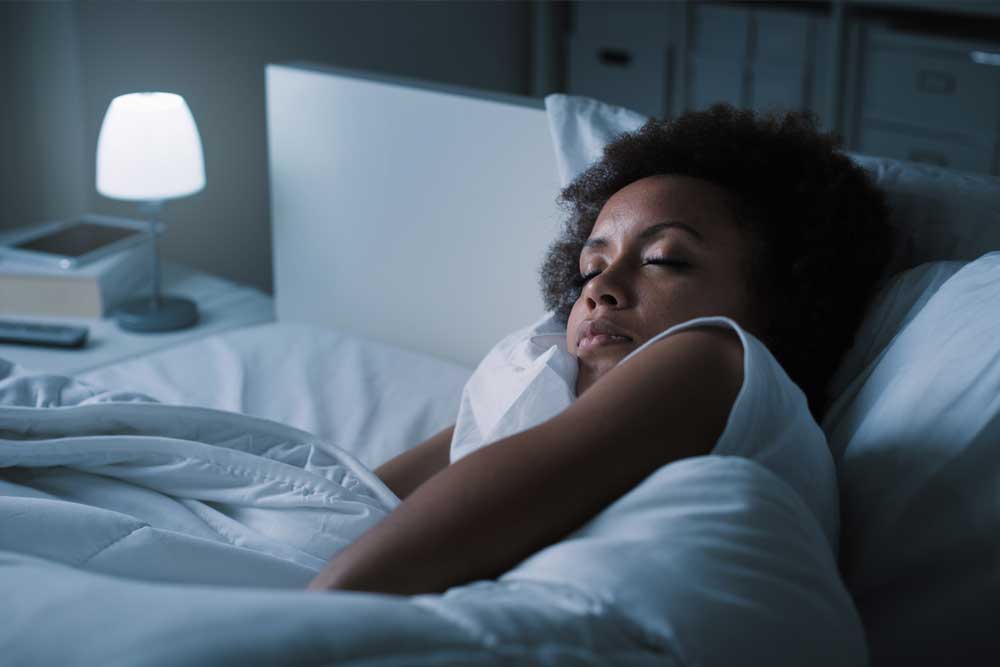Feeling hot – and not in a sexy way? If the summer heat has you sizzling like a sausage on the BBQ, you’re going to want to read these tips. Some of the most frustrating menopause symptoms are hot flushes and night sweats and the sweltering summer heat can make it even harder to get a good night’s rest. Read on for ideas on how to stay cool, manage night sweats, and enjoy restful sleep even when the temperature keeps rising.
Find what you need quickly
Getting your bedroom ready for a comfortable sleep
It may seem obvious but making your bedroom cool and inviting is the first step to getting a good night’s sleep. Here are some ideas to try:
Choose breathable bedding
Swapping your usual bedding for those made from breathable fabrics like cotton or bamboo can help. These materials allow air to circulate, helping to regulate your body temperature and reducing discomfort from night sweats.
Invest in cooling pillows
Look for pillows designed to dissipate heat, such as those made from gel-infused memory foam or cooling gel pads.
Remove any distractions
Keep TVs, phones, and other electronic devices in another room or charge them outside your bedroom. It’s too tempting to get trapped in the “scroll zone” if they’re within arm’s reach – the stimulation from what you are reading and the light from the LED screen can disrupt your sleep quality.
Keep your room for sleep
Keep your room tidy so it feels restful and remove your work laptop if you work from your bedroom. It is helpful if you are not reminded about your work to-do lists before you go to sleep!
Improve the temperature and airflow
Open windows for cross ventilation
Open windows on opposite sides of your bedroom if you can, or keep a gap at the top and bottom if you have sash windows. This allows fresh air to circulate and helps cool the room.
Use fans
Place fans near windows or doorways to bring in cooler air, improving air circulation and temperature. A fan near your bed can feel cooling on your body and face.
Experiment with air conditioning
If night sweats are a real problem for you, it may help to invest in a portable air conditioning unit. Set your air conditioning to a comfortable temperature before bedtime. A programmable thermostat can help keep your room cool through the night. Experiment with different temperature settings to find what suits you best.
Get creative with alternative cooling methods
Chilled gel packs can be very effective, as can cooling sprays. Apply them to your neck or wrists to help you cool down and give you quick relief during sudden hot flashes or night sweats.
What to wear in bed
Try moisture-wicking pajamas
Fabrics that draw sweat away from your skin will help you feel more comfortable. Look for lightweight and breathable materials like bamboo or moisture-wicking athletic wear designed for sweating.
Keep extra clothing and bedding nearby
Have a spare set of nightwear next to your bed in case you wake up damp and overheated and need to change. A spare sheet and duvet can help you change bedding quickly if they become wet following a night sweat.
Create a relaxing bedtime routine
- Stay hydrated. Drink plenty of water throughout the day to regulate your body temperature. Keep a glass of ice water by your bedside to refresh you if needed during the night.
- Take a cool shower or bath before bed. This can help lower your body temperature and relax you for a restful night’s sleep.
- Practice relaxation techniques. Try deep breathing, muscle relaxation, meditation, or gentle yoga before bed. They can calm your mind, reduce stress, and prepare for a more peaceful sleep.
Final word
Night sweats are tricky to manage at the best of times but throw tropical weather into the mix and you can become a hot and sticky mess. There are things you can do during the day to prepare for a better night’s sleep so you find it easier to fall – and stay – asleep. Prioritizing your sleep can make your menopause symptoms that bit easier to cope with.
Find out more about menopause on our blog or in our symptoms library.





